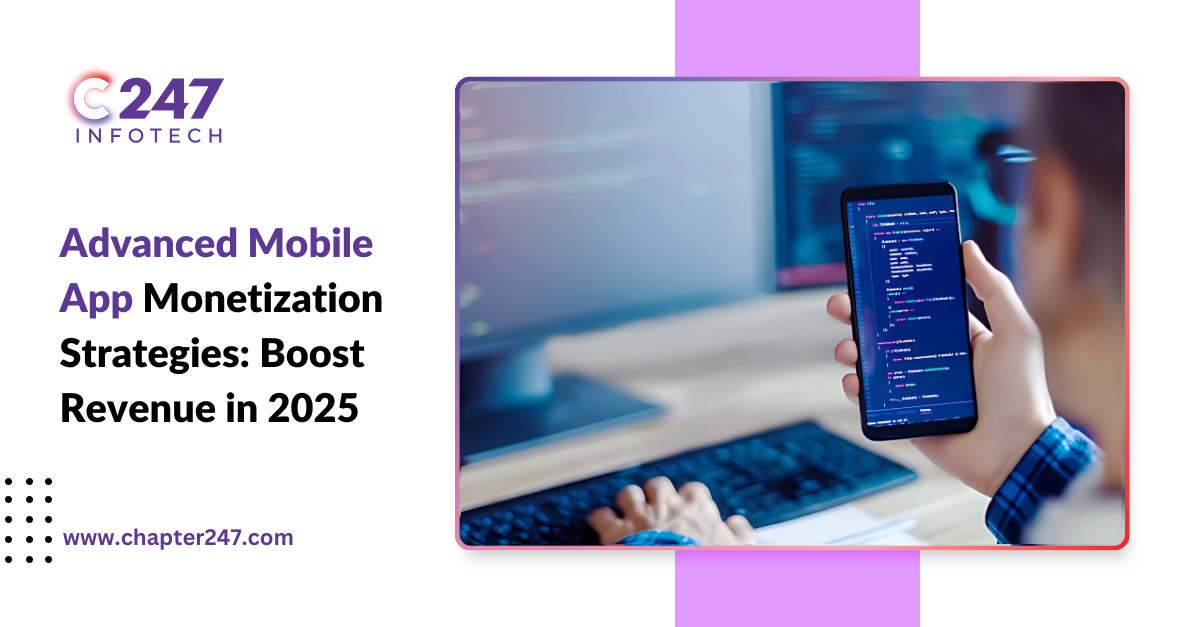As the present-day business environment is tightly connected to digital advances, developing an advanced mobile application is only the first step. Even if you create the most seamless and gratifying user flow and well-designed interface, those will not keep the app going.
However, the business proposition of reaching such dizzying heights is maximising its monetisation potential in 2025, simultaneously a science and an art. Given that over 5 million apps are operating today, battling for people’s attention and money, it is critical to consider how to turn downloads into regularly occurring and consistent revenues.
Growing App Market
The numerous in-app markets present an interesting but, at the same time, rather challenging reality. Internationally, the global app revenue is estimated to rise to $614 billion in 2025, while app users spend 4.8 hours daily in their apps.
In addition, most appliances are free, accounting for 98% of application earnings. These figures highlight the vast opportunities available, but they also underline a critical truth: Users have more app choices than before, and they have also become very selective about the type of apps they use that require their time, money, or attention.
Now, let’s look at the most effective Mobile App Revenue Strategies, which will become the backbone of the mobile environment in 2025.
New Era Of In-App Advertising
In-app advertising has evolved beyond simple banners that used to disturb users’ interactions with the Application. It is currently oriented toward creating relevant content and improving interactiveness.
Gaming apps widely use offerwalls and rewarded videos, where users complete short videos to receive a special reward. Native ads are supposed to blend in with the app content, making the ads part of the app’s content. On the other hand, interstitial ads appear when there are breaks, like between levels, while banners are placed in the least intrusive manner.
Timing and relevance are pivotal to the success of in-app advertising. Showing ads during moments when users are most likely to engage not only boosts revenue but also maintains user satisfaction.
For example, a gaming app reported a 40% increase in revenue after introducing rewarded ads at level completion points, capitalising on players’ motivation to earn extra rewards.
Balancing Value and Exclusivity
In Modern App Monetization Techniques, the freemium strategy remains popular. It has been seen to bring success in engaging the user. It has a lite version of an app with enough options to create a positive and engaging experience and limits more valuable features behind the paywall. They are equal; the secret is to make it perfect for your targeted customers without compromising the benefit you serve. That smartphone’s free version must provide value sufficient for end-users, but the paid features must be enticing enough to motivate users to pay for them.
A good example of this strategy working is Spotify. The free version allows users to listen to millions of songs, sometimes interrupted by ads, whereas the paid version affords an uninterrupted, better experience. This approach not only contributes to revenue but also helps involve users and make them loyal to the payment option in the application.
Subscription-Based Models
Selling subscriptions will be the primary way of monetising in 2025 since this model continuously provides value to users willing to pay. This works well if the app updates frequently or consistently. Dedicated prices divide the market into various segments, ensuring affordable subscriptions.
The success of this approach is based on the consistent application of the material in the development. Users are likely to proceed with a subscription if they sense that they will always derive some specific value in the future that may include content sharing, personalisation, or ease.
For instance, Duolingo Plus improves its free learning model of languages by providing add-on options such as lessons that can be done offline and no commercials during usage; this makes the client see the subscription as an investment instead of a costly exercise.
Innovative Uses of In-App Purchases
In-app purchases (IAPs) remain a versatile monetisation tool, particularly for gaming, productivity, and entertainment apps. The most successful IAP strategies don’t just sell products; they enhance the overall user experience. Virtual goods, premium features, and convenience-driven purchases like time-savers create opportunities for users to invest in what matters most to them.
The success of IAPs lies in creating value that feels optional yet irresistible. Pokémon GO exemplifies this strategy by offering items that improve gameplay without diminishing the experience for non-paying users. This balance ensures inclusivity while encouraging spending among those seeking an enhanced experience.
Conclusion
Advanced mobile application in 2025 isn’t just about revenue—it’s about creating user value while sustaining your business. Developers can turn their apps into thriving revenue engines by understanding user behaviour, respecting privacy, and delivering consistent quality. You can choose between subscriptions, partnerships, or innovative IAPs with Chapter247. As the app market grows more competitive, the apps prioritising their users and businesses will undoubtedly lead the way.






